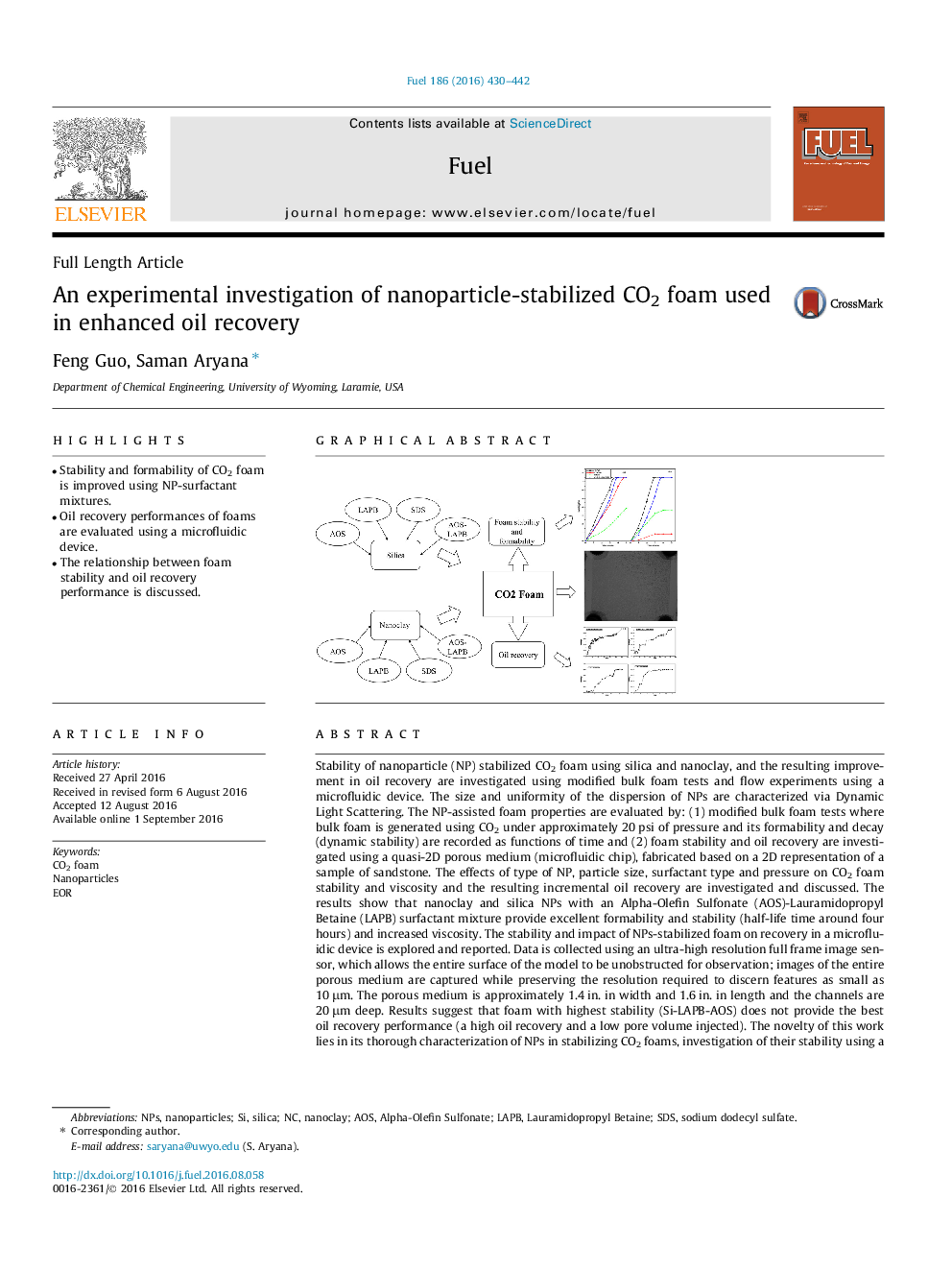| کد مقاله | کد نشریه | سال انتشار | مقاله انگلیسی | نسخه تمام متن |
|---|---|---|---|---|
| 6476117 | 1424978 | 2016 | 13 صفحه PDF | دانلود رایگان |

• Stability and formability of CO2 foam is improved using NP-surfactant mixtures.
• Oil recovery performances of foams are evaluated using a microfluidic device.
• The relationship between foam stability and oil recovery performance is discussed.
Stability of nanoparticle (NP) stabilized CO2 foam using silica and nanoclay, and the resulting improvement in oil recovery are investigated using modified bulk foam tests and flow experiments using a microfluidic device. The size and uniformity of the dispersion of NPs are characterized via Dynamic Light Scattering. The NP-assisted foam properties are evaluated by: (1) modified bulk foam tests where bulk foam is generated using CO2 under approximately 20 psi of pressure and its formability and decay (dynamic stability) are recorded as functions of time and (2) foam stability and oil recovery are investigated using a quasi-2D porous medium (microfluidic chip), fabricated based on a 2D representation of a sample of sandstone. The effects of type of NP, particle size, surfactant type and pressure on CO2 foam stability and viscosity and the resulting incremental oil recovery are investigated and discussed. The results show that nanoclay and silica NPs with an Alpha-Olefin Sulfonate (AOS)-Lauramidopropyl Betaine (LAPB) surfactant mixture provide excellent formability and stability (half-life time around four hours) and increased viscosity. The stability and impact of NPs-stabilized foam on recovery in a microfluidic device is explored and reported. Data is collected using an ultra-high resolution full frame image sensor, which allows the entire surface of the model to be unobstructed for observation; images of the entire porous medium are captured while preserving the resolution required to discern features as small as 10 μm. The porous medium is approximately 1.4 in. in width and 1.6 in. in length and the channels are 20 μm deep. Results suggest that foam with highest stability (Si-LAPB-AOS) does not provide the best oil recovery performance (a high oil recovery and a low pore volume injected). The novelty of this work lies in its thorough characterization of NPs in stabilizing CO2 foams, investigation of their stability using a modified bulk foam test and examination of their stability and incremental recovery resulting from their use compared to systems without NPs in quasi-2D porous media fabricated based on a two-dimensional representation of a Berea sandstone.
Graphical AbstractFigure optionsDownload high-quality image (137 K)Download as PowerPoint slide
Journal: Fuel - Volume 186, 15 December 2016, Pages 430–442